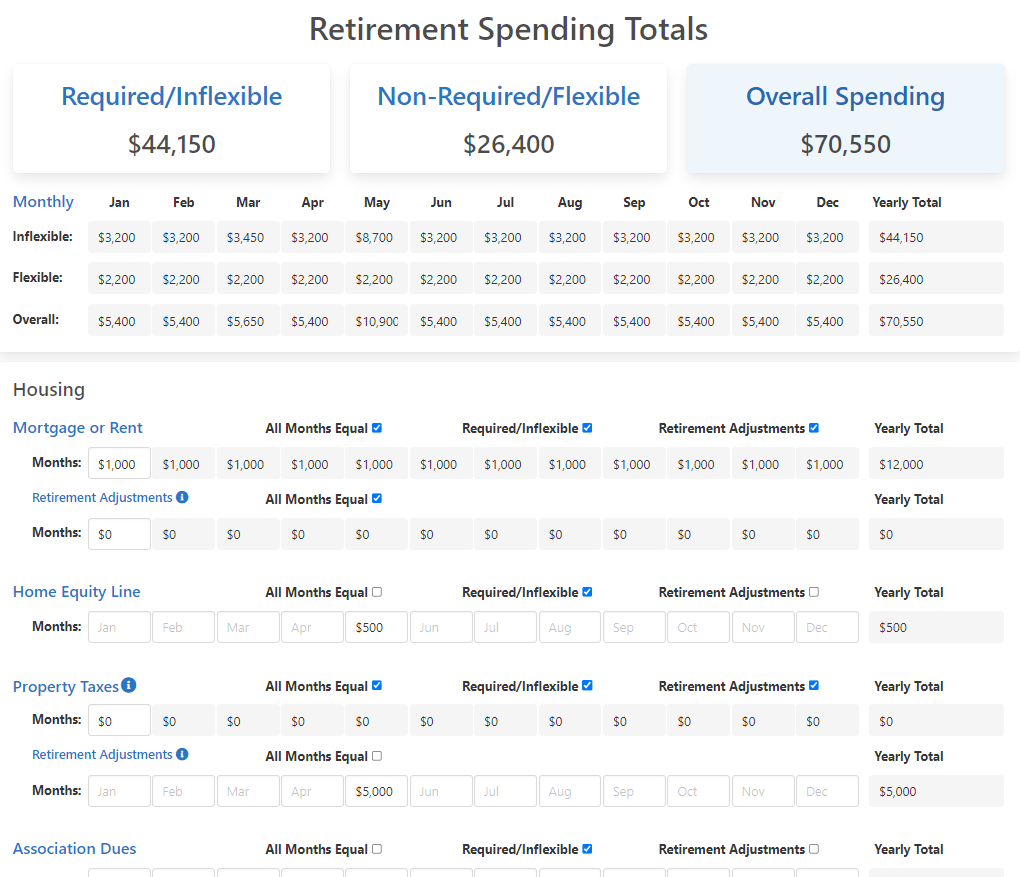“On Retirement Income” series:
- A 4% Rule Fable
- The 4% Rule Launches a Bigger Discussion
- From Mindless Inconsistency to Mindless Consistency
- Stock/Bond Portfolios and Sequence-of-Returns Risk
- Goals-Based Investing Starts with Goals
- Guaranteed Income Sources (Social Security, Etc.)
- How Guaranteed is Guaranteed Income?
- Get Real Income by Getting TIPSy
- More to come…
Background
Bob and Fred have now talked with two financial advisory firms—Rule of Thumb Investment Advisors and Supremely Consistent Asset Managers—who offered, in one sense, diametrically opposite advice. (See the first and third articles in this series for details.) Now at last, the fictional twin brothers head to Round Table for a fictional conversation with us.
Our first discussion looks much more different from the conversations they had with ROT or SCAM than those two ostensibly opposite discussions had with each other! At Round Table, we preach and practice what we call “true goals-based investing.” This means our process starts with an understanding of our clients’ goals, needs, fears, and broader financial picture, which guide the subsequent deployment of investment strategies.
Setting Goals Begins with a Budget
One of the most important initial steps in retirement planning is building out a retirement budget. This allows Round Table to construct a map of ongoing spending needs. In fact, it’s important enough that we’ve built a budgeting tool into our homegrown “Keep It Simple” financial planning software. Here’s a snapshot of a portion of Fred’s completed budget:

One feature of our budgeting system is that it allows pre-retiree clients to build their budget “as is” and then make expected modifications for an “in retirement” budget. For example, Fred plans to retire in one year. From the above snapshot, it appears he will pay off his house in the meantime, as reflected by dropping his monthly mortgage payment from $1000 now to $0 in retirement, plus an offsetting addition of annual property taxes, which he’ll be paying on his own when retirement begins.
“Required/Inflexible” vs. “Non-Required/Flexible” Expenses
Perhaps the most important high-level distinction fleshed out in the budgeting process is the breakdown of total projected annual spending into two general categories:
- “Required/Inflexible” spending: We tell Bob and Fred to think of this as things like property taxes, utilities, insurance premiums, groceries, etc.
- “Non-Required/Flexible” spending: This category commonly includes items like vacations and entertainment.
While squeezing a continuum of budget priorities into a binary categorization necessarily oversimplifies reality, this is nonetheless a powerful distinction, and a common one among high-quality retirement researchers.[1]
Filling out these categories enables us to begin the “true goals-based investing” process:
- To ensure meeting “required/inflexible” goals, Round Table seeks to utilize or create sources of safe, reliable, and preferably inflation-adjusted income.
- When a retiree is willing to allow for flexibility in spending on certain budget items, we can invest in a way that gives them the ability to spend more (and/or grow their assets more) initially, on average, and under most scenarios in exchange for the willingness to spend less if necessary.
Sometimes I prefer to phrase this more expressively:
- If someone professes a willingness to risk spending their last ten years of life eating cat food[2] in exchange for a shot at generational wealth, I’m going to try to talk them out of it.[3]
- But if folks are willing to risk a staycation in exchange for a decent shot at Aruba, I’m not going to try to convince them to lock in Branson instead.
As to how we do this, that’s what this extended article series is about. But as we tell Bob and Fred at this juncture, we are happy to land wherever each client feels most comfortable on a spectrum from “make me a detailed expert in what you do” to “just take care of it for me”!
At this point, Bob chimes in with, “I get what you’re saying. By that thought process, though, my weekly golf game would be a ‘non-required’ expense. But if I had to give up golf, I’m not sure I’d see the point in retiring!”[4]
This is why we really prefer the term “inflexible” to “required.” Any budget item that a retiree would not wish to contemplate living without (or with less of) can be relabeled within our budget tool as a “required/inflexible” expense, and our planning and investment process will reflect that. (Each line item in our budget tool suggests a default setting for this toggle, but they’re all editable.)
Beyond the Budget: Additional Goals
Importantly, there will be some planned and unplanned expenses that do not fit naturally into an ongoing annual budget. Items like a new car, emergency expenses, and possible long-term care in old age are best modeled outside the budget. Where possible, we take a goals-based approach to targeting those expenses too! But that discussion will have to wait for installments in this series that are further down the road.
If you don’t want to wait that long, or if you’re less interested in Bob and Fred’s retirement goals than your own, please feel free to reach out to us to start a discussion!
[1] The circularity of attesting the acuity of researchers who agree with us is freely confessed. We stand by the pronouncement nonetheless!
[2] Is cat food really that much cheaper than people food? I dunno. Clearly we’re not talking about the premium stuff.
[3] Note that this is a (sensationalized, but not inaccurate) description of the 100% “total return,” risky portfolio approaches proposed by both ROT and SCAM.
[4] Our thanks to Michael Finke, Professor of Wealth Management at The American College of Financial Services, for the weekly golf game example, from his webinar on goals-based planning.
DISCLOSURES: All content is provided solely for informational purposes and should not be considered an offer, or a solicitation of an offer, to buy or sell any particular security, product, or service. Round Table Investment Strategies (Round Table) does not offer specific investment recommendations in this presentation. This article should not be considered a comprehensive review or analysis of the topics discussed in the article. Investing involves risks, including possible loss of principal. Despite efforts to be accurate and current, this article may contain out-of-date information, Round Table will not be under an obligation to advise of any subsequent changes related to the topics discussed in this article. Round Table is not an attorney or accountant and does not provide legal, tax or accounting advice. This article is impersonal and does not take into account individual circumstances. Reading this article does not create a client relationship with Round Table. An individual should not make personal financial or investment decisions based solely upon this article. This article is not a substitute for or the same as a consultation with an investment adviser in a one-on-one context whereby all the facts of the individual’s situation can be considered in their entirety and the investment adviser can provide individualized investment advice or a customized financial plan.
